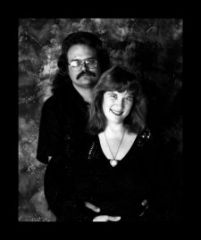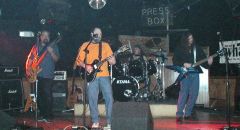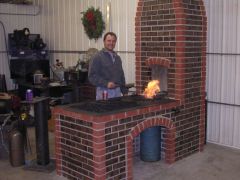-
Posts
9,162 -
Joined
-
Last visited
Content Type
Profiles
Forums
Articles
Gallery
Downloads
Events
Everything posted by Steve Sells
-
My forge is coal, and it is outside. I have a roof no walls. 2 weeks ago I got permission to raise an 11 x16 building at the rear of my property, and brick a side draft forge. But I am building a 3 burner gasser, with a bit of help. I will get the permit and lay foundation after the weather warms up, in a month or 2. Part of the issue is my training, part is the job I am currently on, 2 days ago of an 8 hour day I spent 3 doing what was called for in the print, the rest was repairing what some one else had done over the past years. Wire sizes, colors all mixed, not even neutrals in same conduit, they used what they had, in what ever manner worked for them. yes there are burned wires. even long screws through the conduit. and a few fused/melted breakers, so at present I hate all Hack Jobs. Most of these bad circuits I have to trace and correct while hot, because it is an operating business. we only de-energize if no other option. like to replace the wire, until then I work them hot. I am ok with live work, just not this xxxxxxxxxxx of a wiring mess the 3 of us have to address and correct with minimal disruption of the business. I don't like hiring others to do work either, but I do it because its far safer and cheaper to get a pro, than to do it myself and maybe save a few $$ now, then maybe suffer later. I also get permits to secure my legal interest in my house, and to appease zoning.
-
This is not a you or me thing, its the US national electrical code (NEC), and as your address as posted is in the states, it applies, no matter what degree you may have. If it is not according to the NEC then it is "not to code", as that is what wired to code means. I was trying to prevent a person from following your advice as to wire gauge. I know that the code is not easy to understand, that is why I said avoid amature electricians. NEC section 240.4 sub D is clear about 12 gauge wire and max amperage allowed as 20 amps. NO exceptions, and I did post that 310.16 is for calculation the voltage drop only. it IS NOT a chart for breaker sizes. I was correcting your misstatement of "...#12 can carry 25 amps.." and that is false. Under ANY condition. I stand by what I said, #12 must NEVER be fused above 20 amps. period. I am sorry you took this as a personal attack, If you looked at the chart in question you would see the asterisk beside the gauge size, that asterisk calls attention to read what is known as a fine print note. the NEC is full of them, and a qualified Electrician should know. Most amatures do not,. Maybe you have a different definition of amature than I do. I do electrical work for a living. Florida block, and the California block License exams test the skill of looking up the codes rules and conditions and exceptions. the Exam is a pain to pass. many/most fail the first time.
-
This is BULL CRAP, it says NO SUCH THING do NOT listen to amatures about electrical; unless you like getting people killed. #12 copper is rated for 20 amps Max. Period. no exceptions. Many amatures assume that because the NEC chart 310.16 states 25 amps under the insulation rated THHN that is the amperage answer, but that is NOT the rating for Fuse (breaker, same thing) protection. That chart is a starting point of the calculations of voltage drop. #10 is rated for 30 amps. the fuses/breakers are for protecting the wire from over heating and causing a fire. It state this in the fine print at the bottom of the page. I have had too many jobs replacing burnt wiring from people guessing they can do it them selves. If you have to ask then Hire a professional. Also beleive it or not, If you jury rig your own stuff, and there IS a fire because of it, not only can you be sued by any one injured, but the Insurance company MAY refuse to pay for "not to code wiring practice". That is why contractor's carry Liability Insurance, because property insurance by the owner does not cover mistakes by installers. Do what you want to, But I get mad when I see people pretendung to know electrical codes. even tho they may mean well. and I think QuenchCrask meant a double 50 amp breaker NOT 2 25 amps breakers. I amso know typos when I see them, as I make many of those. Florida Block rated Master Electrician IBEW LU# 305 JIW
-
Stainless like 304 and D2 for starting, later move to 400 series and 300 series, then more esoretic for a hypoalergenic pattern welded material's should suit your needs.
-
Welcome to IForgeIron. nice to see new people here, with new ideas.
-
Welcome to the list, There are a few of us here making blades, many more at various stages of the art. Hope to see more here as well. Enjoy IForgeIron
-
welcome to IforgeIron
-

Hand hammers: your preferences?
Steve Sells replied to matt87's topic in Blacksmithing, General Discussion
My main hammer is a 4 pound cross peen with a thick 16 inch Hickory handle, it is my Baby I have a 3 pounder I use for setting bevels on larger blades, and the 2 pound I used for finer details. all toget her I have about 30 hammers plus about 30 other hammer looking tools like: sets, drifts, fullers, punches, and cut offs. I look forward getting the hammer that Richard of Dancing Frog Forge made for me, 4.5 pound right handed peen. -
Here is the link you asked about: ANVIL MAKING good article for manufacturing or repairs.
-
I once had to braize (yes, brass rod and oxy torch) a grounding wire to the side of a plate. no edge available, and drilling a hole for a bolt was not allowed either.
-
I use a Hot Punch the blade with the name "Fenris Forge" in 1/16 inch letters. I also have one in 1/8 inch letters, as well as a "SLSELLS" in 1/16 for hidden on the tang.
-
your guess is as good as mine. If you searched, I am sure you have seen many guesses from 1018 to 1080. no one can tell with out chemical testing and that is expensive to analize steel. even when we know what steel in normaly used, they can, and do still use others in a pinch
-

Cold Chisel heat treatment
Steve Sells replied to matt993fod's topic in Heat Treating, general discussion
With an unknown metal. heat to non-magnetic, quench in warm to the touch oil Test with file to see if it is hard, if not and sure it was non-mag, then redo the hardening process, using water rather than oil. We warm the quench liquid because thermal transfer if better than room temp would be. after you are sure it hardened, place in oven at around 350F to 375F for 2 hours (you can add a frozen pizza so the wife isn't upset at the oven being on), ou can temper higher but I suggest a 2 stage temper, this is the stress refeif. dont wait to temper because it may crack while you are waiting. IF you plan on heavy abuse to this, like hitting it with a hammer, I suggest using a torch heat the hammer contact side to high temp to soften this end a bit more, which should help to prevent chipping. Do not allow the cutting side to get hot. The easy way that I do this is to place the cutting edge into about 1 inch of water, while you heat the other exposed end. Heat the contact end to blule or purple. -
-
-
after all that dont forget the basic Oil.
-
I admit that not having seen the vise its hard to guess, BUT have you really looked at the monster threads on a post vise? King Kong would have trouble cross threading one of those. try the warm oil.
-
welcome, from Ft Wayne Indiana
-
A guy I worked with last year was a lead burner, like walls for Xray rooms... He Used a hydrogen/oxy torch.
-
Why should they? In one case it is a componant code the other is a construction term for loading stress. they are both using a different standards system. It is like why do we have ounces in both volume and weight? depending on what system you use you will have a different amount, thay will both technically be an ounce. Soo many standards for various reasons.
-

Top ten sign you may be a blacksmith
Steve Sells replied to Ice Czar's topic in Blacksmithing, General Discussion
All the children in the neighborhood bring you broken junk that would probable be better off thrown away, and ask you to repair it for them. and you do, with improvments :D -
.. wonder if I could use the Iron/steel dust below my sander/grinder and mix it with my Borax... the problem is that isn't only iron, its also bit of your sand paper/grinder wheel. So you have to decide is that other stuff going to make good steel?
-
I just came to this post to steel his idea, Great one Jayco, I dont want a full electric blower, I have used them, and switched back to my hand unit. I like my crank, BUT when using coke for damascus welding, it will help a lot. this is the perfect solution.:cool:




